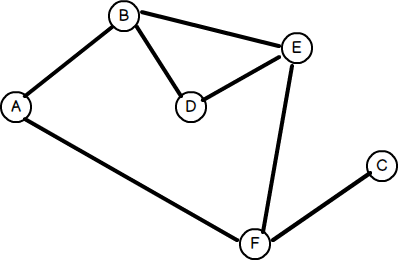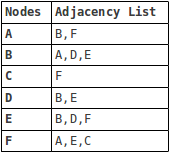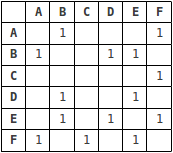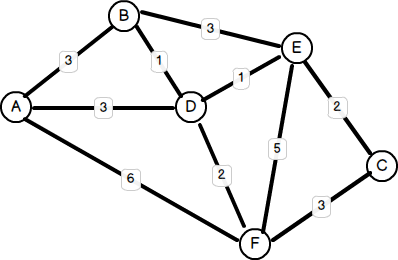PHP Master | Data Structures for PHP Devs: Graphs

Key Takeaways
- Graphs are mathematical constructs used to model relationships between key/value pairs and have numerous real-world applications such as network optimization, traffic routing, and social network analysis. They are made up of vertices (nodes) and edges (lines) that connect them, which can be directed or undirected, and weighted or unweighted.
- Graphs can be represented in two ways: as an adjacency matrix or an adjacency list. Adjacency lists are more space-efficient, especially for sparse graphs where most pairs of vertices are unconnected, while adjacency matrices facilitate quicker lookups.
- A common application of graph theory is finding the least number of hops (i.e., the shortest path) between any two nodes. This can be achieved using breadth-first search, which involves traversing the graph level by level from a designated root node. This process requires maintaining a queue of unvisited nodes.
- Dijkstra’s algorithm is widely used to find the shortest or most optimal path between any two nodes in a graph. This involves examining each edge between all possible pairs of vertices, starting from the source node, and maintaining an updated set of vertices with the shortest total distance until the target node is reached.
The Least Number of Hops
A common application of graph theory is finding the least number of hops between any two nodes. As with trees, graphs can be traversed in one of two ways: depth-first or breadth-first. We covered depth-first search in the previous article, so let’s take a look at breadth-first search. Consider the following graph:
1. Create a queue 2. Enqueue the root node and mark it as visited 3. While the queue is not empty do: 3a. dequeue the current node 3b. if the current node is the one we're looking for then stop 3c. else enqueue each unvisited adjacent node and mark as visited
Representing the Graph
There are generally two ways to represent a graph: either as an adjacency matrix or an adjacency list. The above graph represented as an adjacency list looks like this:

1. Create a queue 2. Enqueue the root node and mark it as visited 3. While the queue is not empty do: 3a. dequeue the current node 3b. if the current node is the one we're looking for then stop 3c. else enqueue each unvisited adjacent node and mark as visited
<span><span><?php
</span></span><span><span>$graph = array(
</span></span><span> <span>'A' => array('B', 'F'),
</span></span><span> <span>'B' => array('A', 'D', 'E'),
</span></span><span> <span>'C' => array('F'),
</span></span><span> <span>'D' => array('B', 'E'),
</span></span><span> <span>'E' => array('B', 'D', 'F'),
</span></span><span> <span>'F' => array('A', 'E', 'C'),
</span></span><span><span>);</span></span><span><span><?php
</span></span><span><span>class Graph
</span></span><span><span>{
</span></span><span> <span>protected $graph;
</span></span><span> <span>protected $visited = array();
</span></span><span>
</span><span> <span>public function __construct($graph) {
</span></span><span> <span>$this->graph = $graph;
</span></span><span> <span>}
</span></span><span>
</span><span> <span>// find least number of hops (edges) between 2 nodes
</span></span><span> <span>// (vertices)
</span></span><span> <span>public function breadthFirstSearch($origin, $destination) {
</span></span><span> <span>// mark all nodes as unvisited
</span></span><span> <span>foreach ($this->graph as $vertex => $adj) {
</span></span><span> <span>$this->visited[$vertex] = false;
</span></span><span> <span>}
</span></span><span>
</span><span> <span>// create an empty queue
</span></span><span> <span>$q = new SplQueue();
</span></span><span>
</span><span> <span>// enqueue the origin vertex and mark as visited
</span></span><span> <span>$q->enqueue($origin);
</span></span><span> <span>$this->visited[$origin] = true;
</span></span><span>
</span><span> <span>// this is used to track the path back from each node
</span></span><span> <span>$path = array();
</span></span><span> <span>$path[$origin] = new SplDoublyLinkedList();
</span></span><span> <span>$path[$origin]->setIteratorMode(
</span></span><span> <span>SplDoublyLinkedList<span>::</span>IT_MODE_FIFO|SplDoublyLinkedList<span>::</span>IT_MODE_KEEP
</span></span><span> <span>);
</span></span><span>
</span><span> <span>$path[$origin]->push($origin);
</span></span><span>
</span><span> <span>$found = false;
</span></span><span> <span>// while queue is not empty and destination not found
</span></span><span> <span>while (!$q->isEmpty() && $q->bottom() != $destination) {
</span></span><span> <span>$t = $q->dequeue();
</span></span><span>
</span><span> <span>if (!empty($this->graph[$t])) {
</span></span><span> <span>// for each adjacent neighbor
</span></span><span> <span>foreach ($this->graph[$t] as $vertex) {
</span></span><span> <span>if (!$this->visited[$vertex]) {
</span></span><span> <span>// if not yet visited, enqueue vertex and mark
</span></span><span> <span>// as visited
</span></span><span> <span>$q->enqueue($vertex);
</span></span><span> <span>$this->visited[$vertex] = true;
</span></span><span> <span>// add vertex to current path
</span></span><span> <span>$path[$vertex] = clone $path[$t];
</span></span><span> <span>$path[$vertex]->push($vertex);
</span></span><span> <span>}
</span></span><span> <span>}
</span></span><span> <span>}
</span></span><span> <span>}
</span></span><span>
</span><span> <span>if (isset($path[$destination])) {
</span></span><span> <span>echo "<span><span>$origin</span> to <span>$destination</span> in "</span>,
</span></span><span> <span>count($path[$destination]) - 1,
</span></span><span> <span>" hopsn";
</span></span><span> <span>$sep = '';
</span></span><span> <span>foreach ($path[$destination] as $vertex) {
</span></span><span> <span>echo $sep, $vertex;
</span></span><span> <span>$sep = '->';
</span></span><span> <span>}
</span></span><span> <span>echo "n";
</span></span><span> <span>}
</span></span><span> <span>else {
</span></span><span> <span>echo "No route from <span><span>$origin</span> to <span>$destinationn</span>"</span>;
</span></span><span> <span>}
</span></span><span> <span>}
</span></span><span><span>}</span></span>Finding the Shortest-Path
Another common problem is finding the most optimal path between any two nodes. Earlier I mentioned GoogleMap’s driving directions as an example of this. Other applications include planning travel itineraries, road traffic management, and train/bus scheduling. One of the most famous algorithms to address this problem was invented in 1959 by a 29 year-old computer scientist by the name of Edsger W. Dijkstra. In general terms, Dijkstra’s solution involves examining each edge between all possible pairs of vertices starting from the source node and maintaining an updated set of vertices with the shortest total distance until the target node is reached, or not reached, whichever the case may be. There are several ways to implement the solution, and indeed, over years following 1959 many enhancements – using MinHeaps, PriorityQueues, and Fibonacci Heaps – were made to Dijkstra’s original algorithm. Some improved performance, while others were designed to address shortcomings in Dijkstra’s solution since it only worked with positive weighted graphs (where the weights are positive values). Here’s an example of a (positive) weighted graph:
1. Create a queue 2. Enqueue the root node and mark it as visited 3. While the queue is not empty do: 3a. dequeue the current node 3b. if the current node is the one we're looking for then stop 3c. else enqueue each unvisited adjacent node and mark as visited
<span><span><?php
</span></span><span><span>$graph = array(
</span></span><span> <span>'A' => array('B', 'F'),
</span></span><span> <span>'B' => array('A', 'D', 'E'),
</span></span><span> <span>'C' => array('F'),
</span></span><span> <span>'D' => array('B', 'E'),
</span></span><span> <span>'E' => array('B', 'D', 'F'),
</span></span><span> <span>'F' => array('A', 'E', 'C'),
</span></span><span><span>);</span></span><span><span><?php
</span></span><span><span>class Graph
</span></span><span><span>{
</span></span><span> <span>protected $graph;
</span></span><span> <span>protected $visited = array();
</span></span><span>
</span><span> <span>public function __construct($graph) {
</span></span><span> <span>$this->graph = $graph;
</span></span><span> <span>}
</span></span><span>
</span><span> <span>// find least number of hops (edges) between 2 nodes
</span></span><span> <span>// (vertices)
</span></span><span> <span>public function breadthFirstSearch($origin, $destination) {
</span></span><span> <span>// mark all nodes as unvisited
</span></span><span> <span>foreach ($this->graph as $vertex => $adj) {
</span></span><span> <span>$this->visited[$vertex] = false;
</span></span><span> <span>}
</span></span><span>
</span><span> <span>// create an empty queue
</span></span><span> <span>$q = new SplQueue();
</span></span><span>
</span><span> <span>// enqueue the origin vertex and mark as visited
</span></span><span> <span>$q->enqueue($origin);
</span></span><span> <span>$this->visited[$origin] = true;
</span></span><span>
</span><span> <span>// this is used to track the path back from each node
</span></span><span> <span>$path = array();
</span></span><span> <span>$path[$origin] = new SplDoublyLinkedList();
</span></span><span> <span>$path[$origin]->setIteratorMode(
</span></span><span> <span>SplDoublyLinkedList<span>::</span>IT_MODE_FIFO|SplDoublyLinkedList<span>::</span>IT_MODE_KEEP
</span></span><span> <span>);
</span></span><span>
</span><span> <span>$path[$origin]->push($origin);
</span></span><span>
</span><span> <span>$found = false;
</span></span><span> <span>// while queue is not empty and destination not found
</span></span><span> <span>while (!$q->isEmpty() && $q->bottom() != $destination) {
</span></span><span> <span>$t = $q->dequeue();
</span></span><span>
</span><span> <span>if (!empty($this->graph[$t])) {
</span></span><span> <span>// for each adjacent neighbor
</span></span><span> <span>foreach ($this->graph[$t] as $vertex) {
</span></span><span> <span>if (!$this->visited[$vertex]) {
</span></span><span> <span>// if not yet visited, enqueue vertex and mark
</span></span><span> <span>// as visited
</span></span><span> <span>$q->enqueue($vertex);
</span></span><span> <span>$this->visited[$vertex] = true;
</span></span><span> <span>// add vertex to current path
</span></span><span> <span>$path[$vertex] = clone $path[$t];
</span></span><span> <span>$path[$vertex]->push($vertex);
</span></span><span> <span>}
</span></span><span> <span>}
</span></span><span> <span>}
</span></span><span> <span>}
</span></span><span>
</span><span> <span>if (isset($path[$destination])) {
</span></span><span> <span>echo "<span><span>$origin</span> to <span>$destination</span> in "</span>,
</span></span><span> <span>count($path[$destination]) - 1,
</span></span><span> <span>" hopsn";
</span></span><span> <span>$sep = '';
</span></span><span> <span>foreach ($path[$destination] as $vertex) {
</span></span><span> <span>echo $sep, $vertex;
</span></span><span> <span>$sep = '->';
</span></span><span> <span>}
</span></span><span> <span>echo "n";
</span></span><span> <span>}
</span></span><span> <span>else {
</span></span><span> <span>echo "No route from <span><span>$origin</span> to <span>$destinationn</span>"</span>;
</span></span><span> <span>}
</span></span><span> <span>}
</span></span><span><span>}</span></span>Summary
In this article I’ve introduced the basics of graph theory, two ways of representing graphs, and two fundamental problems in the application of graph theory. I’ve shown you how a breadth-first search is used to find the least number of hops between any two nodes, and how Dijkstra’s solution is used to find the shortest-path between any two nodes. Image via FotoliaFrequently Asked Questions (FAQs) about Graphs in Data Structures
What is the difference between a graph and a tree in data structures?
A graph and a tree are both non-linear data structures, but they have some key differences. A tree is a type of graph, but not all graphs are trees. A tree is a connected graph without any cycles. It has a hierarchical structure with a root node and child nodes. Each node in a tree has a unique path from the root. On the other hand, a graph can have cycles and its structure is more complex. It can be connected or disconnected and nodes can have multiple paths between them.
How are graphs represented in data structures?
Graphs in data structures can be represented in two ways: adjacency matrix and adjacency list. An adjacency matrix is a 2D array of size V x V where V is the number of vertices in the graph. If there is an edge between vertices i and j, then the cell at the intersection of row i and column j will be 1, otherwise 0. An adjacency list is an array of linked lists. The index of the array represents a vertex and each element in its linked list represents the other vertices that form an edge with the vertex.
What are the types of graphs in data structures?
There are several types of graphs in data structures. A simple graph is a graph with no loops and no more than one edge between any two vertices. A multigraph can have multiple edges between vertices. A complete graph is a simple graph where every pair of vertices is connected by an edge. A weighted graph assigns a weight to each edge. A directed graph (or digraph) has edges with a direction. The edges point from one vertex to another.
What are the applications of graphs in computer science?
Graphs are used in numerous applications in computer science. They are used in social networks to represent connections between people. They are used in web crawling to visit web pages and build a search index. They are used in network routing algorithms to find the best path between two nodes. They are used in biology to model and analyze biological networks. They are also used in computer graphics and physics simulations.
What are the graph traversal algorithms?
There are two main graph traversal algorithms: Depth-First Search (DFS) and Breadth-First Search (BFS). DFS explores as far as possible along each branch before backtracking. It uses a stack data structure. BFS explores all the vertices at the present depth before going to the next level. It uses a queue data structure.
How to implement a graph in Java?
In Java, a graph can be implemented using a HashMap to store the adjacency list. Each key in the HashMap is a vertex and its value is a LinkedList containing the vertices that it is connected to.
What is a bipartite graph?
A bipartite graph is a graph whose vertices can be divided into two disjoint sets such that every edge connects a vertex in one set to a vertex in the other set. No edge connects vertices within the same set.
What is a subgraph?
A subgraph is a graph that is a part of another graph. It has some (or all) vertices of the original graph and some (or all) edges of the original graph.
What is a cycle in a graph?
A cycle in a graph is a path that starts and ends at the same vertex and has at least one edge.
What is a path in a graph?
A path in a graph is a sequence of vertices where each pair of consecutive vertices is connected by an edge.
The above is the detailed content of PHP Master | Data Structures for PHP Devs: Graphs. For more information, please follow other related articles on the PHP Chinese website!

Hot AI Tools

Undresser.AI Undress
AI-powered app for creating realistic nude photos

AI Clothes Remover
Online AI tool for removing clothes from photos.

Undress AI Tool
Undress images for free

Clothoff.io
AI clothes remover

Video Face Swap
Swap faces in any video effortlessly with our completely free AI face swap tool!

Hot Article

Hot Tools

Notepad++7.3.1
Easy-to-use and free code editor

SublimeText3 Chinese version
Chinese version, very easy to use

Zend Studio 13.0.1
Powerful PHP integrated development environment

Dreamweaver CS6
Visual web development tools

SublimeText3 Mac version
God-level code editing software (SublimeText3)

Hot Topics
 Explain JSON Web Tokens (JWT) and their use case in PHP APIs.
Apr 05, 2025 am 12:04 AM
Explain JSON Web Tokens (JWT) and their use case in PHP APIs.
Apr 05, 2025 am 12:04 AM
JWT is an open standard based on JSON, used to securely transmit information between parties, mainly for identity authentication and information exchange. 1. JWT consists of three parts: Header, Payload and Signature. 2. The working principle of JWT includes three steps: generating JWT, verifying JWT and parsing Payload. 3. When using JWT for authentication in PHP, JWT can be generated and verified, and user role and permission information can be included in advanced usage. 4. Common errors include signature verification failure, token expiration, and payload oversized. Debugging skills include using debugging tools and logging. 5. Performance optimization and best practices include using appropriate signature algorithms, setting validity periods reasonably,
 How does session hijacking work and how can you mitigate it in PHP?
Apr 06, 2025 am 12:02 AM
How does session hijacking work and how can you mitigate it in PHP?
Apr 06, 2025 am 12:02 AM
Session hijacking can be achieved through the following steps: 1. Obtain the session ID, 2. Use the session ID, 3. Keep the session active. The methods to prevent session hijacking in PHP include: 1. Use the session_regenerate_id() function to regenerate the session ID, 2. Store session data through the database, 3. Ensure that all session data is transmitted through HTTPS.
 What are Enumerations (Enums) in PHP 8.1?
Apr 03, 2025 am 12:05 AM
What are Enumerations (Enums) in PHP 8.1?
Apr 03, 2025 am 12:05 AM
The enumeration function in PHP8.1 enhances the clarity and type safety of the code by defining named constants. 1) Enumerations can be integers, strings or objects, improving code readability and type safety. 2) Enumeration is based on class and supports object-oriented features such as traversal and reflection. 3) Enumeration can be used for comparison and assignment to ensure type safety. 4) Enumeration supports adding methods to implement complex logic. 5) Strict type checking and error handling can avoid common errors. 6) Enumeration reduces magic value and improves maintainability, but pay attention to performance optimization.
 Describe the SOLID principles and how they apply to PHP development.
Apr 03, 2025 am 12:04 AM
Describe the SOLID principles and how they apply to PHP development.
Apr 03, 2025 am 12:04 AM
The application of SOLID principle in PHP development includes: 1. Single responsibility principle (SRP): Each class is responsible for only one function. 2. Open and close principle (OCP): Changes are achieved through extension rather than modification. 3. Lisch's Substitution Principle (LSP): Subclasses can replace base classes without affecting program accuracy. 4. Interface isolation principle (ISP): Use fine-grained interfaces to avoid dependencies and unused methods. 5. Dependency inversion principle (DIP): High and low-level modules rely on abstraction and are implemented through dependency injection.
 Explain late static binding in PHP (static::).
Apr 03, 2025 am 12:04 AM
Explain late static binding in PHP (static::).
Apr 03, 2025 am 12:04 AM
Static binding (static::) implements late static binding (LSB) in PHP, allowing calling classes to be referenced in static contexts rather than defining classes. 1) The parsing process is performed at runtime, 2) Look up the call class in the inheritance relationship, 3) It may bring performance overhead.
 What is REST API design principles?
Apr 04, 2025 am 12:01 AM
What is REST API design principles?
Apr 04, 2025 am 12:01 AM
RESTAPI design principles include resource definition, URI design, HTTP method usage, status code usage, version control, and HATEOAS. 1. Resources should be represented by nouns and maintained at a hierarchy. 2. HTTP methods should conform to their semantics, such as GET is used to obtain resources. 3. The status code should be used correctly, such as 404 means that the resource does not exist. 4. Version control can be implemented through URI or header. 5. HATEOAS boots client operations through links in response.
 How do you handle exceptions effectively in PHP (try, catch, finally, throw)?
Apr 05, 2025 am 12:03 AM
How do you handle exceptions effectively in PHP (try, catch, finally, throw)?
Apr 05, 2025 am 12:03 AM
In PHP, exception handling is achieved through the try, catch, finally, and throw keywords. 1) The try block surrounds the code that may throw exceptions; 2) The catch block handles exceptions; 3) Finally block ensures that the code is always executed; 4) throw is used to manually throw exceptions. These mechanisms help improve the robustness and maintainability of your code.
 What are anonymous classes in PHP and when might you use them?
Apr 04, 2025 am 12:02 AM
What are anonymous classes in PHP and when might you use them?
Apr 04, 2025 am 12:02 AM
The main function of anonymous classes in PHP is to create one-time objects. 1. Anonymous classes allow classes without names to be directly defined in the code, which is suitable for temporary requirements. 2. They can inherit classes or implement interfaces to increase flexibility. 3. Pay attention to performance and code readability when using it, and avoid repeatedly defining the same anonymous classes.






